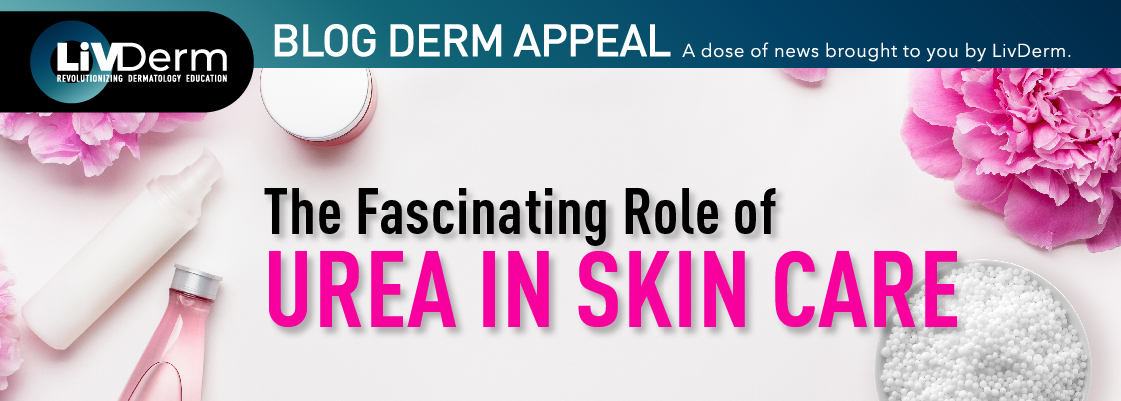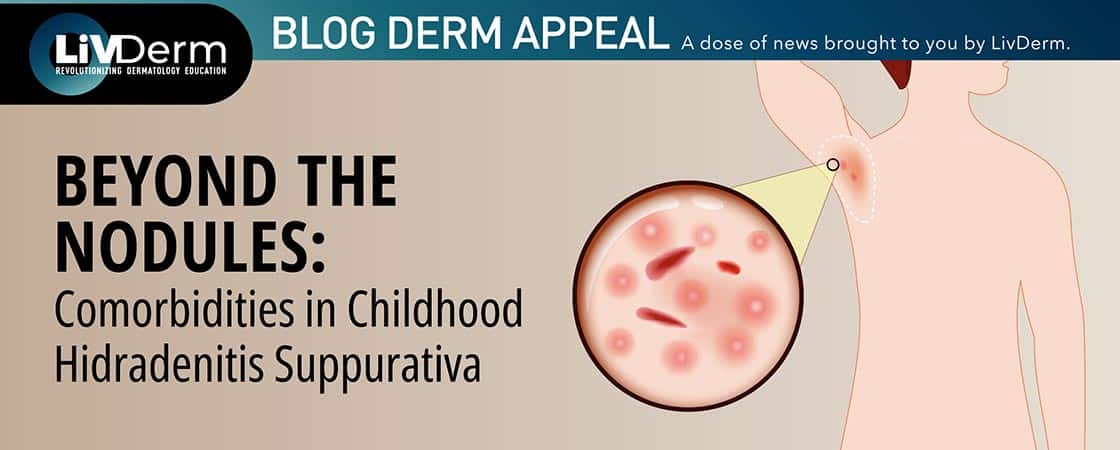Today, urea is an essential component in the dermatologic world. It is recognized as an effective moisturizer and exfoliant and plays a significant role in skin care. Prior to its use in promoting smooth, hydrated skin, it was more frequently used as a topical treatment for wounds due to its antibacterial and proteolytic properties.
Urea is a molecule capable of absorbing water (hygroscopic) as well as holding keratolytic properties. This means it soaks up moisture as well as helps to break down rough, dry skin. These unique properties make urea capable of treating a variety of skin conditions as well as stimulating healthy skin to keep it looking and feeling good.
What is Urea?
Our bodies produce urea naturally. The liver produces urea when it breaks down amino acids and sends it as a waste product to our kidneys for excretion. Urea also occurs naturally in healthy skin. It makes up 7% of our natural moisturizing factor (NMF) and works alongside a number of other substances, such as lactate, sodium, potassium, and pyrrolidone carboxylic acid, to keep skin hydrated.
Synthetic urea production
The urea present in skin care products such as creams, gels, shampoos, and lotions is manufactured in laboratories by combining ammonia and carbon dioxide. These two materials are combined under high pressure and temperatures to form ammonium carbamate, which is in turn heated to form urea and water.
Apart from its use in the manufacture of skin care products, urea is also a fundamental component in agriculture as it has one of the highest nitrogen contents in industrial chemicals, making it favorable as a fertilizer. In addition, urea is used in animal feed, urea-formaldehyde resins as well as in barbituric acid manufacture. Over 200 million tons of urea is produced each year globally, although only a fraction of this goes into creating creams and other skin care products.
Urea in the skin
The outermost layer of skin (stratum corneum) is made up of corneocytes which are essentially dead keratinized skin cells. Within these cells is the NMF which is constantly regulating the skin’s moisture levels. Dry skin occurs when the skin is not able to retain sufficient moisture and can lead to flaky, itchy, tight skin. This may be caused by a number of factors, such as exposure to cold, dry air, aging, or certain medical conditions. Finding ways to lock moisture into the skin is therefore essential in treating dry skin and associated skin conditions.
Uses of urea in skin care
- For moisture – Urea’s hygroscopic properties mean it draws in moisture from the air. It also acts as a humectant, retaining this moisture in the skin cells.
- For increasing skin penetration – Because of urea’s ability to soak up and lock in moisture, the resulting softened skin is more capable of absorbing other substances. This is especially useful with patients being treated with corticosteroids or other topical medications that require absorption.
- For exfoliation – Urea is a keratolytic agent, which means it is capable of breaking down the outer layer of the skin in order to promote new cell growth. It does this by weakening the attachment between the cells in the stratum corneum and dissolving the keratin. This causes the skin layer to soften and peel and, in so doing, gets rid of the dead cells.
- For increasing the skin’s barrier function – Urea helps to stimulate gene expression in the stratum corneum and activates the various components of your skin. It increases the creation of filaggrin, a protein that is essential for keeping the skin hydrated and maintaining healthy barrier function. This is necessary for keeping irritants out and helping to keep your skin looking healthy and radiant.
Urea concentrations
The urea concentration may differ depending on the type of skin care product and its use. This is because different concentrations are used to treat different skin conditions. Typically, the concentration of urea in products will range from 3% to 40%.
- Up to 10% – Products with up to 10% of urea are used to hydrate the skin and optimize the skin’s barrier function.
- 10-30% – Concentrations with 10-30% of urea can be used for exfoliation purposes as it can help decrease the thickness of the stratum corneum and improve conditions that produce scaly skin, such as ichthyosis.
- 30-40% – Products with 30-40% concentration are said to be proteolytic, which means they are capable of breaking down proteins. This may be used for conditions such as dissolving and peeling dystrophic nails.
Safety of urea
Aside from the powerful characteristics of urea, one of the reasons it is trusted by dermatologists and consumers is because it is significantly well tolerated. Most people who use products containing urea do not experience adverse side effects, although the chances of experiencing side effects increase with higher urea concentrations. Some side effects include stinging, itching, irritation, or burning. In most cases, however, these are mild and temporary and usually resolve on their own.
Key takeaway
Urea continues to be a leading component in maintaining healthy skin function as well as in the treatment of specific skin conditions. Research into the positive effects of urea in promoting healthy, hydrated skin continues. And despite seeing advancements from its competitors, urea remains one of the most preferred skin care treatment and preventative options on the market due to its many positive features as well as its safety factor.
Sources:
- https://www.ncbi.nlm.nih.gov/pmc/articles/PMC8611129/
- https://thenakedchemist.com/what-is-urea-and-its-benefits-in-skincare/
- https://onlinelibrary.wiley.com/doi/full/10.1111/ijcp.13570
- https://www.acs.org/content/acs/en/molecule-of-the-week/archive/u/urea.html
- https://onlinelibrary.wiley.com/doi/full/10.1111/ijcp.13621
- https://owlcation.com/stem/Urea-in-the-Body-in-Skin-Creams-and-in-Fertilizers
- https://sciencing.com/urea-made-5194345.html
- https://www.ncbi.nlm.nih.gov/pmc/articles/PMC3352965/#:~:text=In%20fact%2C%20urea%20appears%20to,likely%20antimicrobial%20defense%20as%20well.
- https://www.britannica.com/science/urea

















